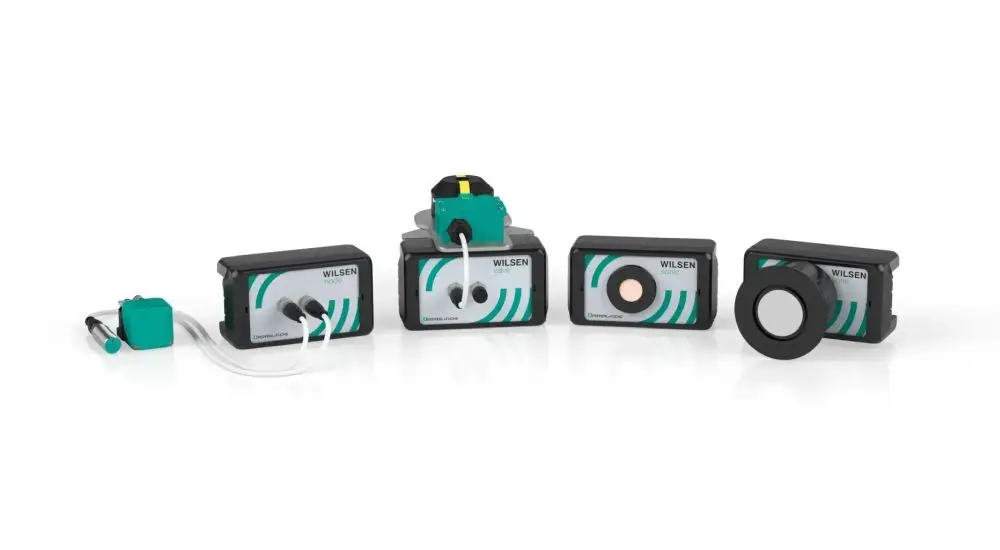Pepperl+Fuchs: New firmware takes wireless sensor technology to a new level

Interview with Daniel Möst, New Business Development Manager at Pepperl+Fuchs
Pepperl+Fuchs sets a new milestone in industrial wireless sensor technology: With the new firmware for the WILSEN.sonic and WILSEN.node wireless sensor solutions, measurements can now be taken every 20 seconds for the first time—with simultaneous event-driven data transmission. The first ten sensors with the new firmware have already been delivered to pilot customers.
"This brings us much closer to the requirements of traditional mechanical engineering and opens up new fields of application for battery-powered wireless sensor technology in industry," explains Daniel Möst, New Business Development Manager at Pepperl+Fuchs, in an interview with Think WIoT.
WILSEN.sonic and WILSEN.node: Intelligent wireless sensor technology
The firmware is designed for two core components of the WILSEN family from Pepperl+Fuchs:
WILSEN.sonic: a modular sensor unit that wirelessly connects a wide variety of sensors, such as inductive and capacitive sensors, and transmits their data. It can also be used to monitor potential-free contacts.
WILSEN.node: a modular sensor unit that wirelessly connects a wide variety of sensors, such as inductive, capacitive, or NAMUR sensors, and transmits their data.
By combining these systems, both standardized measurement tasks and complex, customer-specific scenarios in industry can be mapped – without complex cabling.
From ten minutes to 20 seconds – a quantum leap
Until now, measurement intervals of around ten minutes were common. For machine builders, who often expect data in the millisecond range, this was a considerable hurdle.
"With the new firmware, we are now making a leap to a 20-second measurement frequency. This puts us in a range where critical processes can be monitored realistically and reliably with battery-powered wireless sensors for the first time," says Möst.
The result: wireless sensor technology is becoming practical and economical for many production and monitoring applications.
Event-driven transmission: Data only when it counts
The system does not continuously transmit all measurements, but only when defined events occur. Example: If an ultrasonic sensor exceeds a certain threshold value, exactly one data packet is transmitted via the gateway.
"In networks with hundreds or even thousands of sensors, transmitting every 20 seconds would simply not be possible," explains Möst. "Our solution ensures that only relevant data is available in high quality and at the right moment."
This reduces the load on the network infrastructure, especially in LoRaWAN environments, and increases efficiency.
Battery life remains manageable
More frequent measurements naturally lead to higher energy consumption, but the firmware offers intelligent control options:
Sleep mode during inactive phases, e.g., at night when there is no production.
Flexible measurement intervals based on actual operating times.
Expected battery life of 2–3 years, matching typical maintenance intervals.
"Most customers accept this rhythm, as battery changes are carried out during inspection rounds anyway," says Möst. This makes the solution economical and predictable in the long term.
New fields of application for mechanical engineering
The combination of short measurement intervals and demand-driven data transmission opens up completely new areas of application:
Condition monitoring of complex systems
Predictive maintenance through real-time anomaly detection
Process optimization in manufacturing and logistics
Reliable monitoring of critical parameters without cabling
"Our goal is to bring wireless sensors to a level where they are taken seriously by the mechanical engineering industry," emphasizes Möst. "With this firmware, we have taken a decisive step forward—and are giving our customers the opportunity to monitor serious industrial processes wirelessly."
Conclusion: Wireless sensor technology on its way into production
The new firmware for WILSEN.sonic and WILSEN.node from Pepperl+Fuchs closes the gap between classic automation technology and modern wireless sensor technology such as LoRaWAN. The 20-second interval in combination with event-driven transmission provides a balance between data quality, network stability, and energy efficiency.
This makes wireless sensors a serious tool for mechanical engineering and Industry 4.0 projects—from manufacturing and logistics to predictive maintenance.

